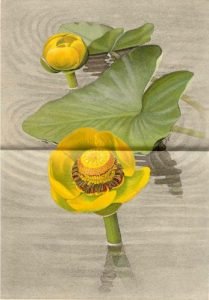Wokas as an Article of Commerce
In the preparation of lolensh and of shiwulinz the broken seed shells (tsi’-hlak) are winnowed, as already described, from the seed kernels. These seed shells or hulls are not always thrown away, but they are often saved for a later curious use. In the manufacture of their finer baskets and trays the Klamaths use for both warp and weft cords twisted from the split outer surface of the tule (Scirpus lacustris). Upon the main body of the basket as woven from these cords are overlaid various designs in white, black, yellow, and maroon. The patterns in black are made from … Read more









